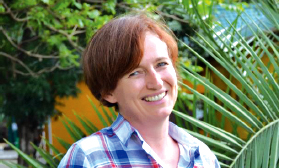
I recently came across an article about venture capital structures and how they interact and work with start-ups. The article argued that the venture capital structure is broken because it favours “quantity over quality, consumption over creation, quick exits over sustainable growth, and shareholder profit over shared prosperity.” In short, venture capital is always on the look-out for “unicorns” rather than “zebras.” Why? Well, unicorns are graceful, glamorous, and alone…. Of course, unicorns only exist in fairy tales. Zebras, on the other hand, are real: they are numerous, they live in herds, they are indigenous, the product of their environment and – apart from their wonderful stripes – they are rather unremarkable.
The article brought home to me many parallels between venture capital and the traditional aid system. The traditional aid system has also always chased unicorns rather than zebras. In this analogy, it is the INGO that has been the unicorn, manifesting itself in the form of centralised power and hierarchical structures. In this case, the zebras, have been local organizations that operate in networks that represent decentralised power.
Unicorns have a competitive character: they are all about silos, egos, and logos, while zebras are more interested in movement building. Some zebras have egos, sure, but they rarely work in silos and are much less concerned about logos. In the aid system, unicorns compete with big international management consulting firms for large, lucrative service contracts. Once these service contracts are secured, unicorns morph into the extended arm of funding agencies. Zebras, meanwhile, are more focused on building relationships with communities and working through trust-based networks.
Unicorns focus on “value for money” and “impact”; zebras, on the other hand, focus on creativity, experimentation, and learning. Unicorns work with rigid, imposed indicators of success, while zebras measure what matters to the people they serve.
Unicorn organizations are extractive, ruthlessly competitive, and hierarchical in their relationships with others, especially local organisations, while zebras tend to have flatter structures informed by the people they serve, and they value empathy and solidarity. Unicorns speak sophisticated English and they “impress” with terms like scalability, profitability, innovation, impact, cash, burn rate, key performance indicators, and IRR (internal rate of return). Zebras don’t know those fancy words because they speak like regular people using less technical terms. Unicorns are essentially the construct of the traditional aid system. They are always in danger of dying a natural death when their funders close the tap for their short-term projects. The risk of zebras dying off is much less because their work draws on a much broader range of resources, including and especially the communities they work with and the networks that they have built.
Of course, unicorns only exist in fairy tales. Zebras, on the other hand, are real: they are numerous, they live in herds, they are indigenous, the product of their environment and – apart from their wonderful stripes – they are rather unremarkable.
And yet, even though unicorns exist only in the imagination, the big money continues to go to them, not the zebras.
When it was conceived in 2009, my organization, the Zambian Governance Foundation (ZGF) was definitely a unicorn. It was a pooled fund, set up to lower transaction costs for the five bilateral donors behind it whose purpose was to support local civil society. Over the first few years, we managed substantial amounts of money – up to 4 million Euros annually. As the product of donors’ imaginings our organisational structure and programme were of course designed primarily to meet their needs (although, despite that we were often criticised for our “low absorption capacity” and for not being able to award grants as swiftly as our donors would have liked).
From very early on, however, we resisted the idea of being someone else’s unicorn. Our founders and board took their roles as stewards seriously, insisting that they should have full authority to manage the organization in the way that they thought best. Our programmes evolved over time, and we were always on the lookout for ways to increase our financial independence and programmatic independence. From the beginning, our dependence on external funding and our strong desire for autonomy presented a tension which, over time, fuelled our growing dissatisfaction with the hand that we had been dealt.

In 2012, we bought an office building financed with fixed deposit earnings. In the same year, we decided to intensify efforts to diversify ZGF’s funding base and develop new revenue streams. This marked the beginning of a gradual detachment from our original donors and an active search for alternative financing options: we did this by offering services in our core competencies and selling renewable energy products. Together our overwhelming determination to be sustainable, to be a truly Zambian organization and to keep innovating, combined to inform the new direction we took. In 2016, we established a business development unit within ZGF, and registered a social enterprise subsidiary, Chuluka Limited, in 2017. All profits earned – albeit limited – were reinvested in ZGF operations. In addition, investments in the financial market and renting out office space have brough in additional income and helped fill the kinds of funding gaps that we had confronted in the past.
In December 2016, we encountered a new world of community and grassroots organisations at the Global Summit on Community Philanthropy in Johannesburg (happening again in December 2023, Bogotá, Colombia). The Summit, which marked the birth of the #ShiftThePower movement, was a definite turning point, inspiring us to commit to our new direction. A few small grants from the Global Fund for Community Foundations enabled us to experiment with designing and piloting community-led development activities, as well as to conduct research on local giving patterns in Zambia.
As “zebras” we became part of a community that had hitherto been completely invisible to us in our “unicorn” days when we were constructs of the traditional aid sector
As our sense of autonomy increased, so did the rift between ZGF and our old donor partners. In 2018, our funding nosedived: to keep the organisation afloat, we were forced to cut all salaries by 40%. These were uncertain and unsettling times, and we were constantly on the look-out for new cost-saving options. However, this period of austerity also forced us to be creative, experimental, and courageous and to realise that we were stronger than we might have previously thought. We enjoyed the intellectual freedom to explore new ways of supporting civil society and we soon integrated community philanthropy into our work, morphing from a mere “civil society support organisation” to one working directly with CSOs and communities.
We worked hard to communicate our new approach to others, and attracted the attention of new funding partners who were encouraged us test new approaches, to learn and to fail (oh and we failed more often than we like to admit!). But new donors were interested in building relationships with the ZGF team, in listening to what we were learning and how we were evolving as an organisation. We reached out to like-minded grassroots organisations, grant makers, and community foundations in Africa, Europe and Asia. As “zebras” we became part of a community that had hitherto been completely invisible to us in our “unicorn” days when we were constructs of the traditional aid sector.
Over the past three years, we have mobilised local and international volunteers, entered into partnerships with new partners (Loop, the Gigatonne Challenge, TechSoup, to name but a few), continuously invested in our ICT infrastructure, became members of Civicus, the Africa Philanthropy Network and the Zambia Alliance for Agro-ecology and Biodiversity (ZAAB), and actively engaged in civil society campaigns aimed at nature conservation such as the Save Zambezi Safe Zambezi campaign.
It has been a tough five years, sure, but it also taught us that with grit and determination, an organization can break free from the conditions of its birth. Unicorns might be more beautiful but I can tell you that it is much more fulfilling – and fun – to be part of a much bigger family of zebras. Even though these past five years were difficult, we demonstrated grit and resilience and managed to morph from a unicorn into being part of a zebra community we genuinely enjoy.
Barbara Nöst is the CEO of the Zambian Governance Foundation for Civil Society.
These ideas have been repurposed into an article for the Treehouse after being shared in a talk presented by Barbara Nöst at a meeting hosted by Tilitonse Foundation on Galvanizing Malawian Civil Society Around Shifting The Power.

